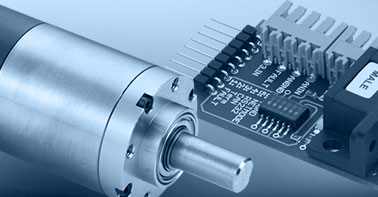- info@ems-ltd.com
- 0118 9817391
Home > PR > Catching it quick
Catching it quick
19/05/2021 - The benefits of point-of-care analysis beyond COVID-19 testing
19th May 2021
Filed under:
Faulhaber, 2021, Point Of Care, Covid

It’s recently been reported that the sequencing infrastructure developed to tackle COVID-19 will be repurposed post-pandemic to combat antibiotic resistance. The fight against the coronavirus has given rise to a number of technology advancements that will benefit the medical sector as a whole. Here Stewart Goulding, managing director of drive system supplier EMS, looks at how point-of-care (PoC) analysis will be valuable going forward.
PoC testing is diagnostic analysis that is performed at or near the site where the patient is located. They can be molecular, antigen or antibody tests. With analysis conducted onsite, rather than it being sent off to a separate laboratory, PoC tests can provide results in a matter of minutes, as opposed to hours or days.
The rapid nature of PoC testing has made it inherently valuable during the COVID-19 pandemic. A quick result means patients who test positive can be promptly instructed to isolate, therefore preventing them from spreading the virus. During the pandemic, PoC testing has been widely conducted in locations such as care homes, schools, hospitals and temporary testing sites.
Quick results, extensive benefits
Beyond COVID-19, PoC tests can be used to diagnose other viral infections, such as influenza or group A streptococci from a throat swab. From blood samples, PoC analysis can reveal glucose, haemoglobin and platelet levels. PoC testing on urine samples can indicate if a patient is pregnant or has a urinary tract infection.
PoC analysis allows early detection of medical conditions, enabling healthcare professionals to make rapid triage and treatment decisions that often lead to a more successful treatment outcome. The faster result and commencement of treatment means the patient can be discharged more quickly, reducing the length of stay in the healthcare facility and making space available for other patients.
The individual conducting the PoC test is only required to do a few simple steps, as an automated lab system can do the rest. Depending on what kind of test is being conducted, motors in the PoC testing equipment can aid in transporting, rotating and shaking samples, as well as mixing reagents. Automating the analysis process enables more reliable results and a faster processing time.
Demanding motor requirements
It's important that the automated PoC testing system performs with the highest accuracy to deliver the healthcare provider with correct test results. Therefore the components in the system must be selected for high accuracy and quality. Stepper motors are an advantageous option to power a PoC testing system, as they can perform with very precise and controlled movements.
EMS is the sole UK supplier of the FAULHABER motor range, including its stepper motors, which are all made in a highly controlled manufacturing process that ensures they perform with supreme accuracy. FAULHABER motors are renowned for their high power density, and their compact size helps keep PoC analysis systems portable.
Motors from FAULHABER are also highly efficient, which is particularly beneficial in PoC testing systems that are battery powered to prolong their operating time. In addition, FAULHABER motors are highly reliable, providing a long service life and eliminating the need for frequent replacement.
Widespread COVID-19 testing has helped control the spread of the virus. However, the benefits of PoC analysis span far beyond the pandemic, helping to diagnose a variety of other infections and medical conditions. With the assistance of high performance motors, automated PoC systems can provide quick and accurate test results, helping to get patients the treatment they need fast.
If you want to learn how EMS and FAULHABER can help with your next generation point of care system, contact us today.
- Categories / Tags
- 1024...SR
- AEMT
- AESL
- Acceleration
- Agriculture
- Agritech
- Autoclave
- BHS
- BHT
- BHx
- BLDC
- BP4
- BRC Series
- BX4
- BXT
- BeBionic
- Bespoke
- Brushed
- Brushless
- Brushless Motor
- Buhler
- Building Automation
- COVID
- CXR
- Catalogue
- Controller
- Coreless
- Coventry
- Custom
- Custom Design
- DC Motor
- DMN
- Dc Motor
- Design
- Dimatech
- Drones
- EDS
- EMS
- EMS News
- EV
- Encoder
- Ewellix
- Exoskeleton
- Expo
- FAULHABER
- Factory
- Faulhaber
- Flat
- GPT
- Galil
- Gearhead
- IEF3
- IMC
- Industry 4.0. Blog
- Inspection
- KAG
- LL06
- LM
- Laboratory Automation
- Linear
- Linear Actuator
- M50
- M80
- MC3
- Manufacturing
- Mechatronics
- MedTech
- Medical
- Medical Devices
- Medical Imaging
- Medtech
- Merkel
- Motion Control
- Motor
- New
- Nidec
- Nidec Servo
- Optical
- Piezo
- Piezomotor
- Pipeline
- Planetary
- Point Of Care
- Precision
- Precistep
- Process
- Production
- Quickshaft
- Robot
- Robotics
- Robots
- SKF
- SR Series
- Samples
- Software
- Space
- Sponsorship
- Stepper
- TMS
- Testing
- Trade Show
- 1016
- 1660
- 1935
- 2017
- 2018
- 2020
- 2021



